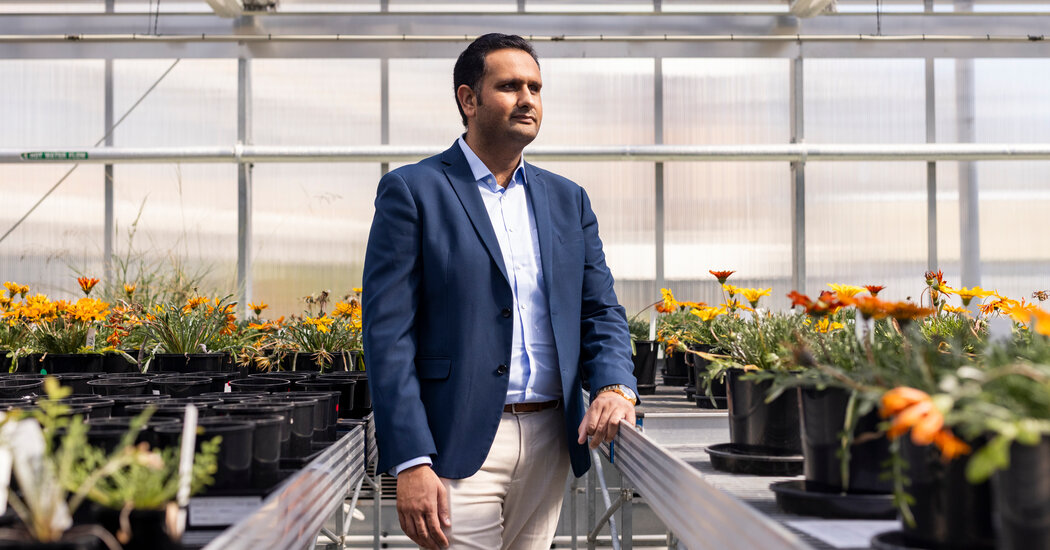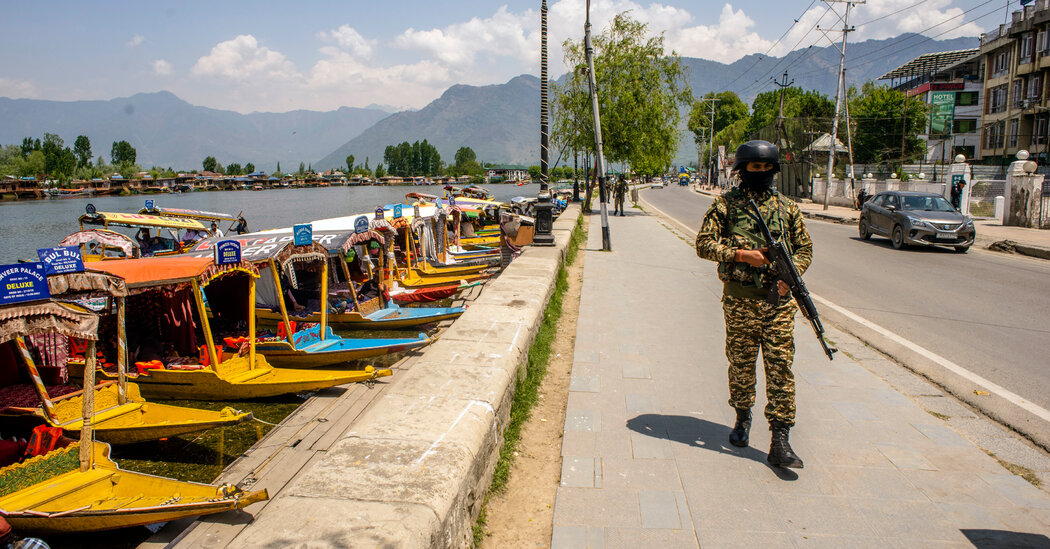Australia was the clear top choice when Ali Bajwa, a native of Pakistan, wanted to pursue a doctorate in agricultural science. The research in the field was cutting edge, the universities were highly ranked and overseas students were welcome in the country, where international education has been referred to as “the biggest export we don’t dig out of the ground.”
Mr. Bajwa arrived a decade ago, specializing in weed control. He brought his family over, all becoming naturalized citizens. He spent years in Wagga Wagga, a rural town, working for the state government and continuing research in weed science. He now teaches at La Trobe University in Melbourne and is a homeowner.
But those hoping to follow Mr. Bajwa’s path face a new reality.
Politicians on both sides of the aisle have turned to capping the number of international students as a way to rein in unaffordable housing, a crisis that is at the top of voters’ minds ahead of next month’s election. The argument is that this will reduce demand for rentals and starter homes and tamp down prices. It is a major shift for Australia, whose economy depends on mining but which once saw education as a “super growth sector” and sought to compete for students with the United States, Britain and Canada.
“We gain a lot more than we lose to international students,” said Mr. Bajwa, 35. “There should be a lot more focus on improving the selection criteria or requirements than a blanket ban or limiting the number.”
Last year, the government of Prime Minister Anthony Albanese sought to to impose a limit on international students but failed to pass legislation. It has since increased student visa fees and slowed processing, reducing the arrival of students from overseas. The opposition leader, Peter Dutton, has pledged to put far stricter restrictions on international students, slashing the number by a further 30,000, for a cap of 240,000 new arrivals a year — and more than tripling the maximum visa fees to up to 5,000 Australian dollars, about $3,200.
Strict border controls during the coronavirus pandemic kept many international students out. But Australia then made a concerted effort to bring them back — temporarily removing work restrictions and offering rebates on visa fees. That led to a record surge of students arriving in the country in 2023 and 2024, with total international student enrollment topping a million for the first time last year.
In September, Mr. Dutton spoke of students who apply to remain in the country after their degrees as “the modern version of the boat arrivals,” in an apparent reference to refugees and asylum seekers.
Australia has long benefited from immigration, which has boosted its labor force and younger demography. About 30 percent of its population was born overseas, and nearly half has at least one parent born overseas.
But views have shifted, and not just here. The United States is scrutinizing and revoking student visas in drastic fashion, casting the right to study in the country as a privilege that can be taken away seemingly arbitrarily; Canada has put the brakes on the influx of students from abroad; Britain has installed new restrictions that it said would prevent people from using student visas to come work in the country.
Australia had long allowed and even encouraged major universities to become dependent on international students to expand their campuses and research programs. Foreigners pay much higher fees than domestic students and contribute a substantial portion of the schools’ revenue.
“International students in Australia had been used for quite some time as a form of an export industry,” said Peter Hurley, a professor of education policy at Victoria University. “The same way they’re promoting the sheep industry, it’s been the same with international education.”
The post-pandemic surge in international students coincided with an acute housing affordability crisis in Australia. Home values have soared compared with incomes, rising about 45 percent from 2020. Sydney was the second least-affordable city in the world after Hong Kong in 2023, based on a comparison of median home prices to median incomes.
While multiple factors have contributed to the crunch in housing supply — including labor shortages, rising construction costs and regulatory issues — international students have made for an expedient, nonvoting segment to target as a quick fix for politicians.
That sentiment was reflected in a question put to Mr. Albanese, of the center-left Labor Party, and Mr. Dutton, who leads the Liberal Party, in their first debate of this election cycle.
“We have a lot of students who are here visiting who are buying housing within the city area,” said a 74-year-old woman named Janine, who said she was concerned about her children and grandchildren’s ability to ever be able to afford a home. “When is one of our governments going turn up and say, Australia belongs to Australians?”
Andrew Norton, a professor of higher education policy at Monash Business School, said there was no question that the number of students arriving in the country — many of them wanting to remain in the country after graduation — was contributing to the demand side of the housing shortage.
At the same time, he said, the current spike is an aberration because of pent-up demand during the pandemic and fewer students returning home. The proposed caps, he added, would be a short-term solution rather than the more thoughtful, comprehensive migration policy reform that is needed.
Critics have also noted that international students largely occupy apartments and share houses concentrated near the universities that would typically not be the types of homes sought out by first-time home buyers.
Clifford Suryana, a fourth-year student at the University of Sydney studying law and commerce who is from Surabaya, Indonesia, said he had learned English from Australian teachers who lived in his hometown. When it came time to think about university, he said he felt a general affinity for Australia and also felt there were business and diplomatic ties with Indonesia that would lend themselves to career opportunities.
Many of his fellow international students, who make up nearly half of the student body at the University of Sydney and account for four-fifths of the school’s tuition fees, contribute far more to Australian society than they take from it, he said.
“Most of them would want to work in Australia or go back to their original country with knowledge they got from Australia,” he said. “In my perspective, that would only be good for Australia.”


